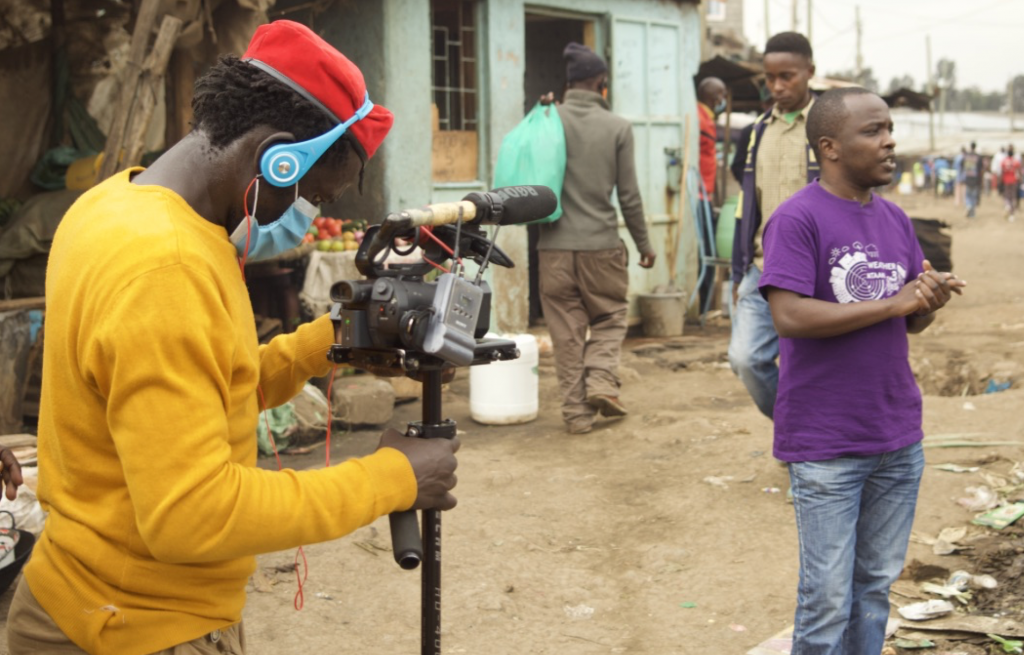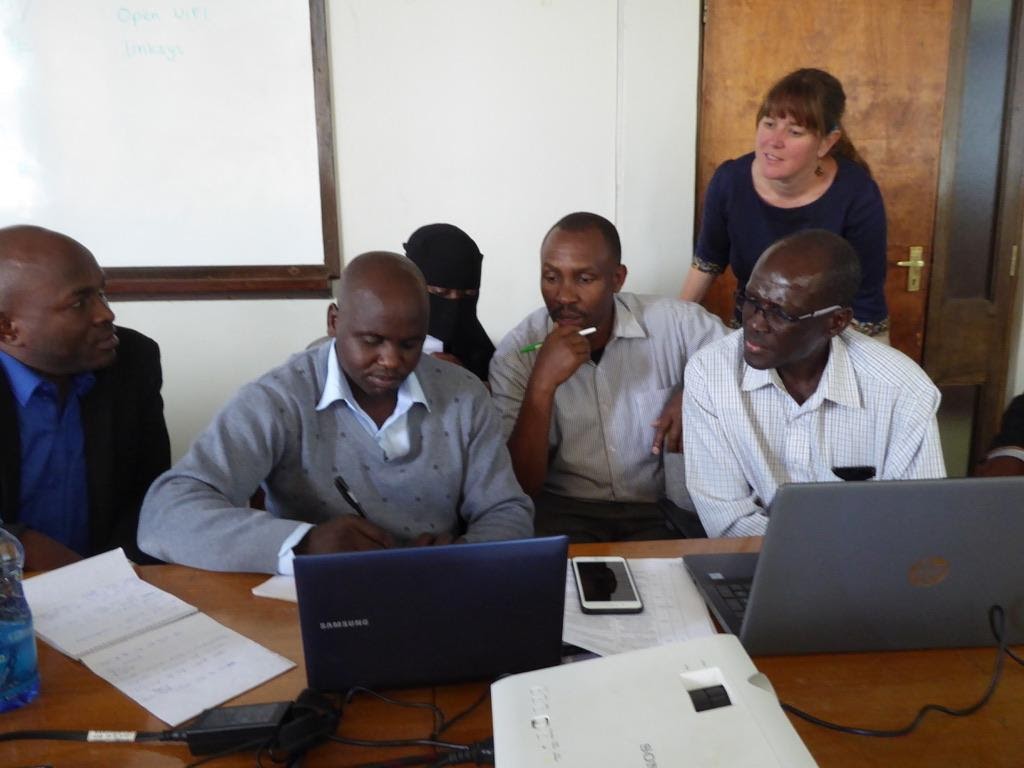A case of mythbusting and opportunity: the weather and COVID-19
Becky Venton, a chartered meteorologist and advisor to Resurgence on weather and climate services, writes on the links between the weather and COVID-19.
There is growing interest in the possible links between the weather and the spread of the novel coronavirus that was first discovered in China at the end of 2019, which we now know as COVID-19. So, what do we know about the direct or indirect effects of the weather on COVID-19? This question is of particular importance to me as a meteorologist who is committed to improving weather services for vulnerable communities that are now facing the dual threats of exposure to high impact weather events and the virus.
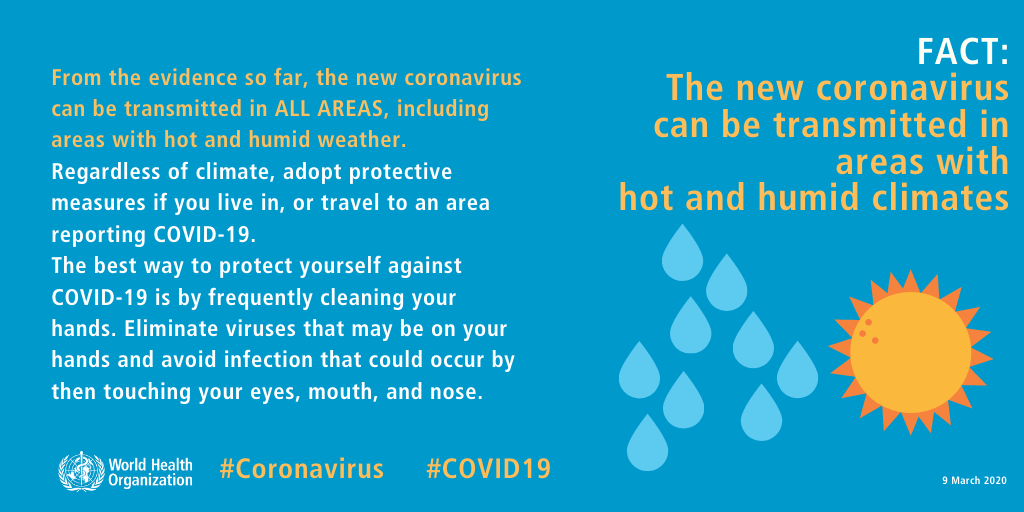 Dispelling false hope in warm climates
Dispelling false hope in warm climates
At the time of writing, there is inadequate evidence to establish any clear, causal link between the weather and the spread rate of COVID-19. As time passes, and as countries adopt different public health strategies to manage the impact of the global pandemic, it becomes increasingly hard to demonstrate a link. In fact, other factors, such as restrictions on movement, are likely to have a far greater effect on the virus’s ability to spread than the weather. There is also much interest in the effects of air quality on both the transmission of the virus and how it affects people’s respiratory health.
Whilst some early studies suggested that the rate of spread was higher in countries with colder temperatures, these correlations do not prove causation. The majority of the early, pre-print and non-peer reviewed studies acknowledge this issue alongside the need for more data to inform ongoing research and the multitude of other factors that can influence the spread of COVID-19.
Analysis of the available science led to the statement from Dr. Mike Ryan, Executive Director of the World Health Organization’s (WHO) Health Emergencies Program that “We have to assume that the virus will continue to have the capacity to spread… It’s a false hope to say, yes, that it will disappear like the flu.” (6 March 2020, as reported by CNBC). This messaging is supported by a series of mythbusters about COVID-19 from the WHO, which include statements on the effects of the weather on the virus, such as: “COVID-19 virus can be transmitted in areas with hot and humid climates”.
Harvesting opportunity from the indirect effects of the weather
Whilst there is no clear scientific direct link between the weather and the spread of the virus, there are perhaps more obvious, indirect effects that the weather can have on the transmission of the virus as a result of our behaviour and in particular, the ability to follow the recommended advice on social distancing.
In East Africa, where I undertake much of my international work, the long rains are well underway and there are already reports of significant flood events. Whilst governments across East Africa have introduced measures to minimise the spread of the COVID-19, such as restrictions on movement and closure of schools, for the many people who need to leave home for work or urgent supplies, the weather is likely to have an impact.
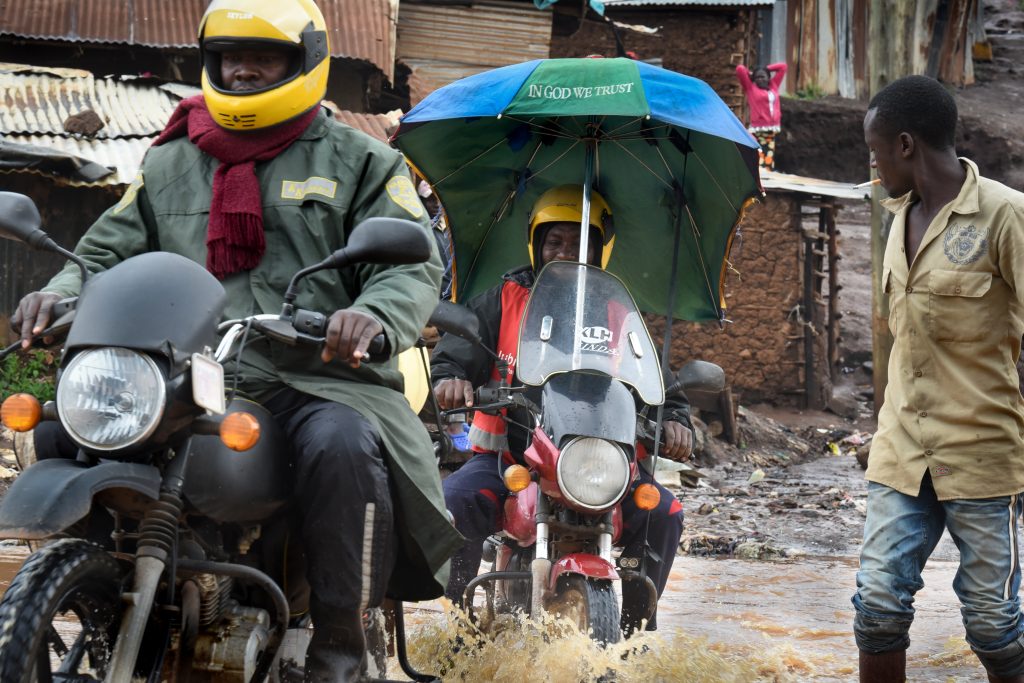
Photo provided by Minx Films for KDI, Nairobi: The challenge of getting around the informal settlements during heavy rain events.
Heavy rain leads to transport challenges. Where public transport is still available, higher demand during the rains makes social distancing problematic; and where it is not available, walking or cycling is made difficult in heavy rain, especially on unmade roads which can quickly become impassable. For those outside during a heavy downpour, the natural response is to seek shelter, but now there is the additional challenge of maintaining a safe distance from others whilst sheltering. Timely and accurate weather forecasts have an important role to play here, helping people to make decisions to maximise their safety, whatever the weather. Whether it is to avoid periods when the heaviest rain is expected, or to consider what might be carried to serve as a personal shelter (such as an umbrella or plastic sheet) so that it is possible to be shielded from the rain whilst maintaining a safe distance from others. There may also be opportunities brought by the rain, such as the possibility of harvesting rainwater to use for handwashing if a safe means of collection and storage can be identified and established by households and communities. All of these factors can be considered as part of the forecast production process and can be included in the information that is disseminated to communities.
Channels of community trust: key to weather and pandemic preparedness
Funded by the United Kingdom’s Department of International Development through the Weather and Climate Services in East Africa (WISER) programme, Resurgence has been working with partners in Nairobi, Kenya and Dar es Salaam, Tanzania to bring relevant weather forecasts and related advice to the residents of informal settlements.
I have been working with Resurgence’s DARAJA project (Developing Risk Awareness through Joint Action) to develop new weather forecasts for these communities. The forecasts have been co-designed by collaborative groups that include residents, community leaders, teachers, media representatives, City Hall officials and the staff of the two National Meteorological and Hydrological Services, Kenya Meteorological Department and Tanzania Meteorological Authority. The new city- focused weather forecasts are now operational and are being cascaded to the communities through a variety of channels including WhatsApp, text messaging, social media and radio. In their onward dissemination through the DARAJA communications networks, the weather forecasts are accompanied by impact statements and advice messages that were co-produced with the communities themselves, ensuring that residents receive relevant and actionable advice. Both the Weather Mtaani initiative in Nairobi and the schools programme in Dar es Salaam have recently extended their reach at the request of the communities, the popularity of these programmes demonstrating a demand for actionable weather information within these vulnerable communities.
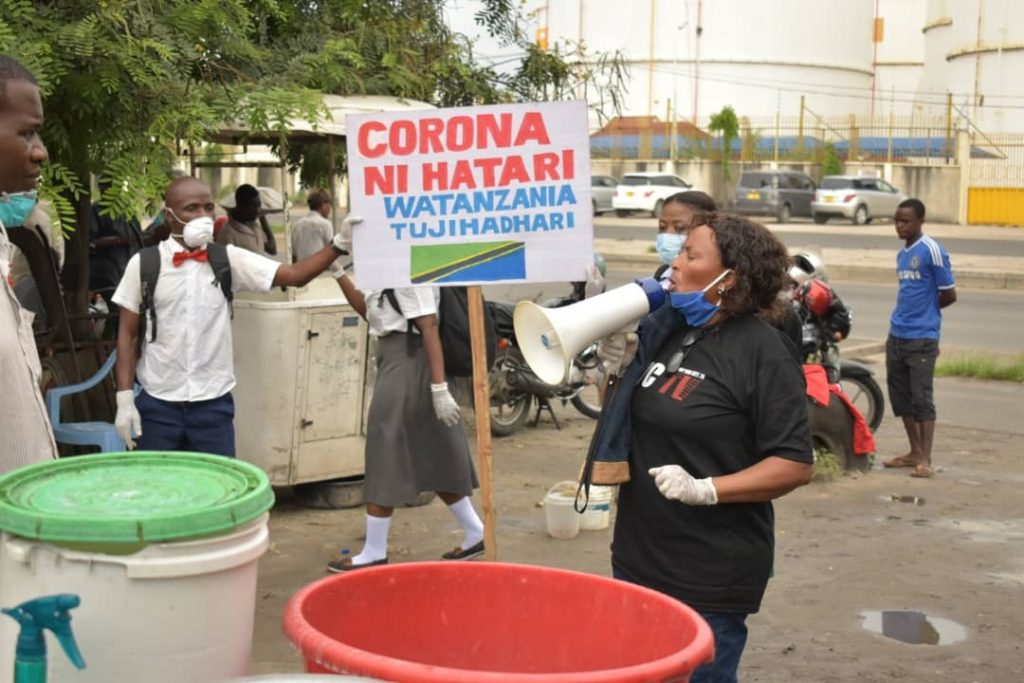
Photo provided by CCI: Promoting awareness of COVID-19 amongst vulnerable communities in Dar es Salaam
Through the project, local DARAJA partners Kounkuey Design Initiative in Nairobi and the Centre for Community Initiatives in Dar es Salaam have established trusted community based communications networks for the dissemination of weather forecasts. Whilst remaining focused on their core public service relating to the weather, there is the opportunity to use these trusted channels to share official guidance relating to COVID-19, sharing the core messages of social distancing and frequent handwashing. These trusted channels, which are supported by community leaders, have an important role to play, especially given the vast amount of false information that is circulating about COVID-19. On the ground in both Nairobi and Dar es Salaam, the DARAJA project is proving to be a critical link between the weather and COVID19: it is keeping important information flowing to these vulnerable communities, empowering them to take the necessary precautions relating to the virus whilst also preparing for the possibility of high impact weather.

